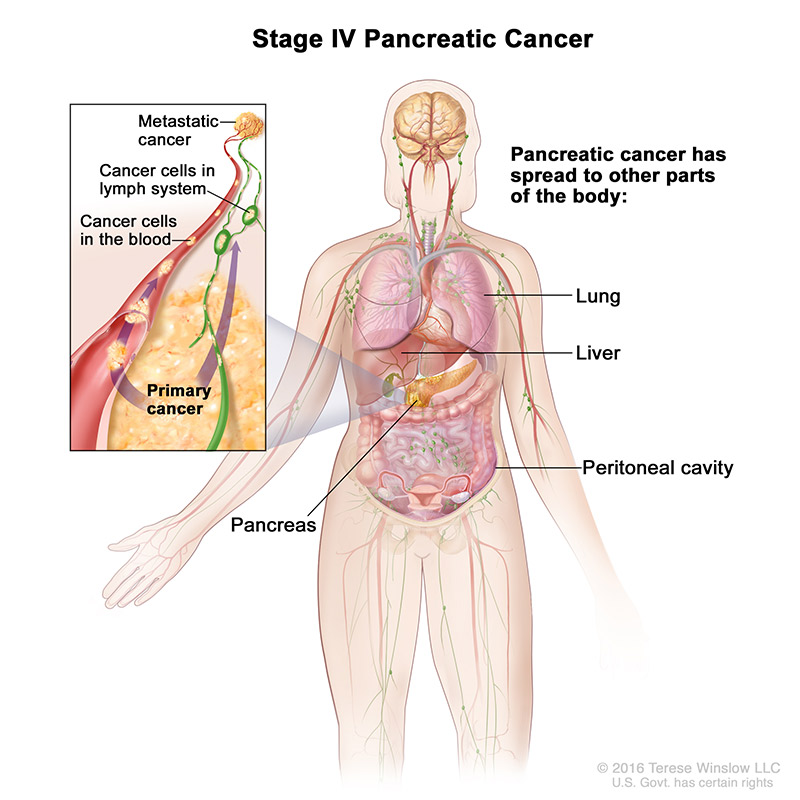Pancreatic cancer staging is a careful attempt to find out the following:
- The size of the tumor in the pancreas
- Whether the tumor has invaded nearby tissues
- Whether the cancer has spread, and if so, to what parts of the body
When cancer of the pancreas spreads, the cancer cells may be found in nearby lymph nodes or the liver. Cancer cells may also be found in the lungs or in fluid collected from the abdomen.
When cancer spreads from its original place to another part of the body, the new tumor has the same kind of abnormal cells and the same name as the original (primary) tumor. For example, if pancreatic cancer spreads to the liver, the cancer cells in the liver are actually pancreatic cancer cells. The disease is metastatic pancreatic cancer, not liver cancer. It’s treated as pancreatic cancer, not as liver cancer. Doctors sometimes call the new tumor in the liver “distant” disease.
To learn whether pancreatic cancer has spread, your doctor may order CT scans or EUS.
Also, a surgeon may look inside your abdomen with a laparoscope (a thin, tube-like device that has a light and a lens for seeing inside the body). The surgeon inserts the laparoscope through a small incision in your belly button. The surgeon will look for any signs of cancer inside your abdomen. You’ll need general anesthesia for this exam.
Stages of Cancer of the Pancreas
Refers to cancer in situ, in which the cancer has not yet grown outside the duct in which it started.
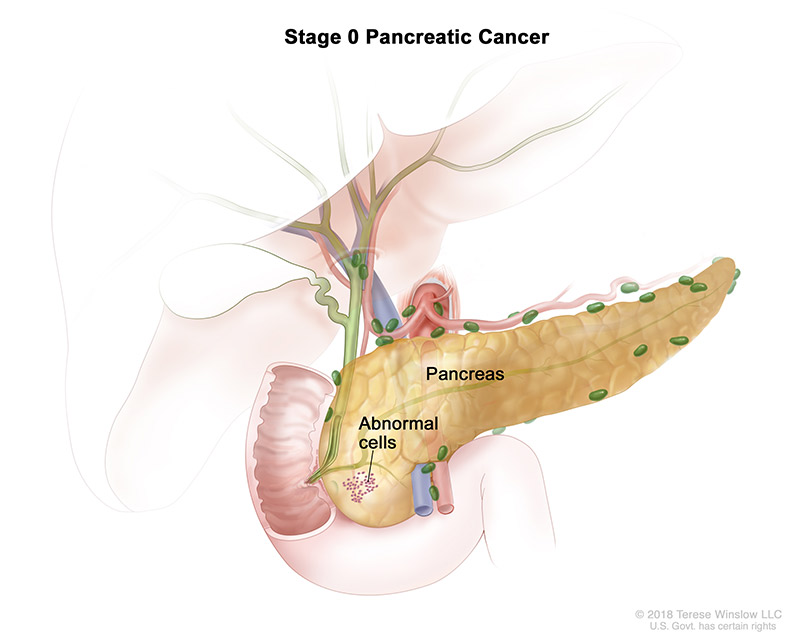
The tumor is found only in the pancreas.
- Stage IA: The tumor is 2 cm or smaller in the pancreas. It has not spread to lymph nodes or other parts of the body.
- Stage IB: A tumor larger than 2 cm is in the pancreas. It has not spread to lymph nodes or other parts of the body.
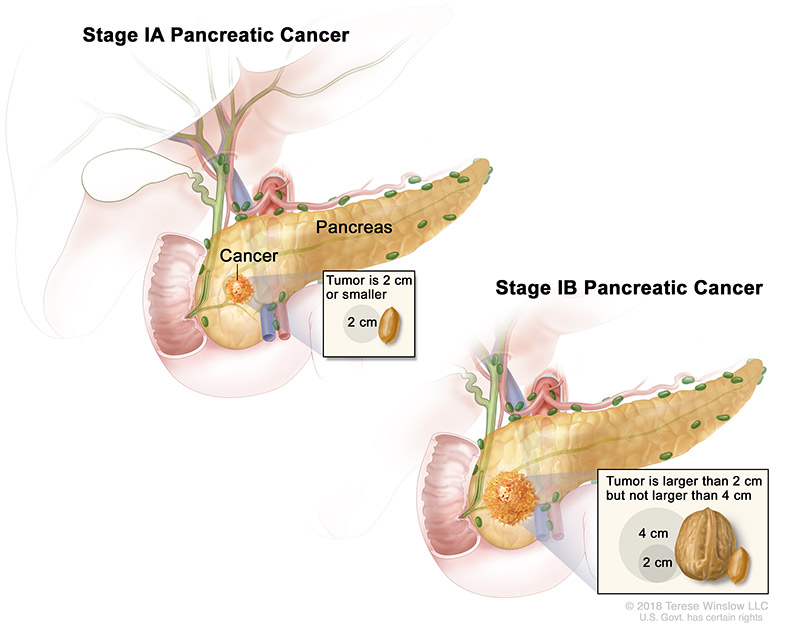
The tumor has invaded nearby tissue but not nearby blood vessels. The cancer may have spread to the lymph nodes.
- Stage IIA: The tumor is larger than 4 cm and extends beyond the pancreas. It has not spread to nearby arteries, veins, lymph nodes, or other parts of the body.
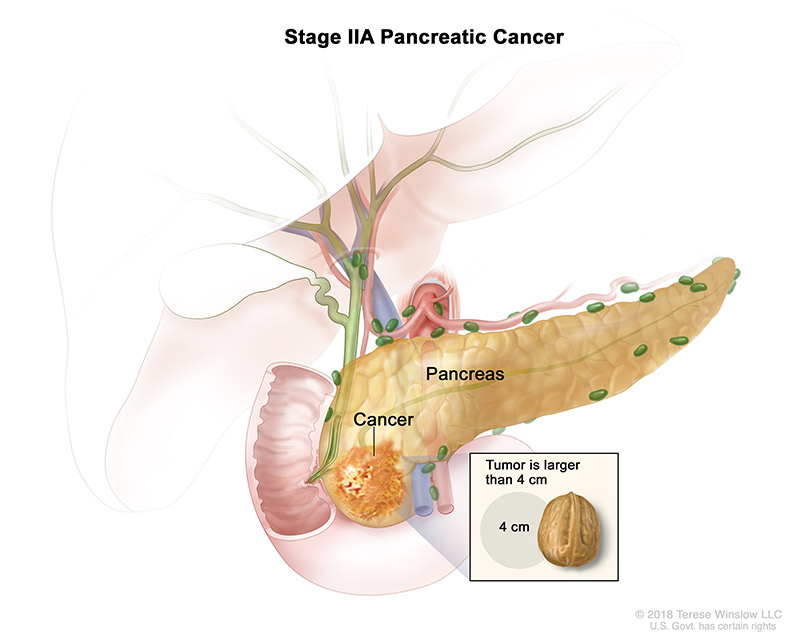
Stage IIB: A tumor of any size has not spread to nearby arteries or veins. It has spread to 1 to 3 regional lymph nodes but not to other parts of the body.
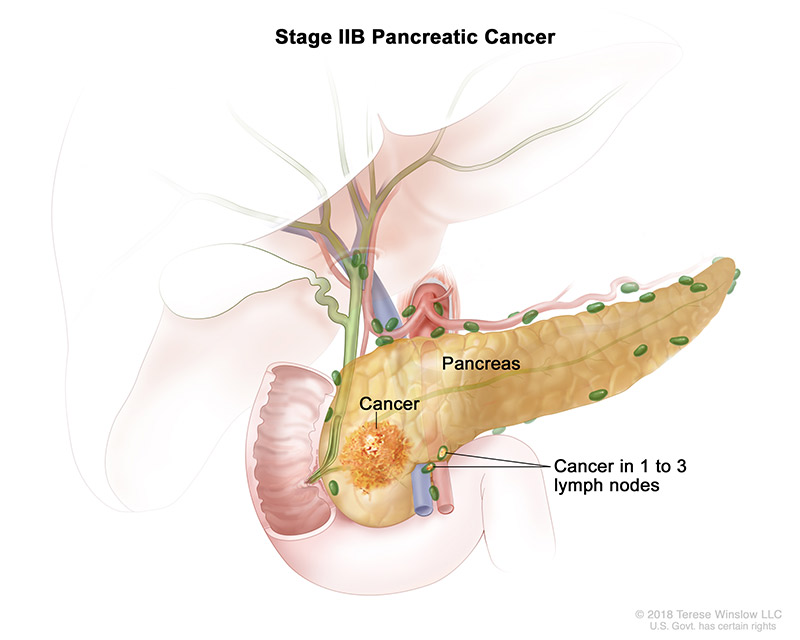
Either of these conditions:
-
A tumor of any size that has spread to 4 or more regional lymph nodes but not to nearby arteries, veins, or other parts of the body.
-
A tumor that has spread to nearby arteries and veins and may have spread to regional lymph nodes. It has not spread to other parts of the body.

Any tumor that has spread to other parts of the body.
